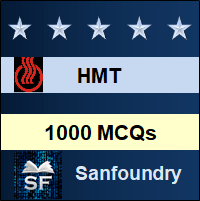
Mass Transfer Multiple Choice Questions Highlights
- 1000+ Multiple Choice Questions & Answers (MCQs) in Mass Transfer with a detailed explanation of every question.- These MCQs cover theoretical concepts, true-false(T/F) statements, fill-in-the-blanks and match the following style statements.
- These MCQs also cover numericals as well as diagram oriented MCQs.
- These MCQs are organized chapterwise and each Chapter is futher organized topicwise.
- Every MCQ set focuses on a specific topic of a given Chapter in Mass Transfer Subject.
Who should Practice Mass Transfer MCQs?
– Students who are preparing for college tests and exams such as mid-term tests and semester tests on Mass Transfer.- Students who are preparing for Online/Offline Tests/Contests in Mass Transfer.
– Students who wish to sharpen their knowledge of Mass Transfer Subject.
- Anyone preparing for Aptitude test in Mass Transfer.
- Anyone preparing for interviews (campus/off-campus interviews, walk-in interview and company interviews).
- Anyone preparing for entrance examinations and other competitive examinations.
- All - Experienced, Freshers and College / School Students.
Mass Transfer Chapters
Here's the list of chapters on the "Mass Transfer" subject covering 100+ topics. You can practice the MCQs chapter by chapter starting from the 1st chapter or you can jump to any chapter of your choice.- Modes and Diffusion
- Interphase Mass Transfer
- Equipment for Gas-Liquid Operations
- Humidification Operations
- Gas Absorption
- Distillation
- Liquid Extraction
- Drying
- Leaching and Mass Transfer Co-efficients
- Diffusion in Solids and Molecular Diffusion in Fluids
1. Modes and Diffusion
The section contains multiple choice questions and answers on concepts of velocity and concentration, convective mass transfer, fick’s law, schimdt number, density concepts, emissivity and various questions on melting point.
2. Interphase Mass Transfer
The section contains questions and answers on interphase mass transfer, various material balance concepts and cascade stages.
|
|
|
3. Equipment for Gas-Liquid Operations
The section contains MCQs on concepts of gas liquid equipments.
|
|
4. Humidification Operations
The section contains multiple choice questions and answers on humidification operations and vapour gas mixtures.
|
|
|
5. Gas Absorption
The section contains questions and answers on absorption concepts for operating line, gas absorptio principle and absorption tower design.
|
|
|
6. Distillation
The section contains MCQs on vapour liquid equilibria, idealities concepts, flash vapourization methods, differential distillation methods, distillation column operation, azeotropic mixture rectification, reflux ratio and its cost variance, various distillation types and flash vaporization laws.
7. Liquid Extraction
The section contains multiple choice questions and answers on various concepts which include extraction liquid equilibria, unit operation solvent selection, extraction equipments and ternary equilibrium diagram.
|
|
|
8. Drying
The section contains questions and answers on Drying rate, drying time period calculation and moisture concept of drying.
|
|
|
9. Leaching and Mass Transfer Co-efficients
The section contains MCQs on technique of leaching operation.
|
|
10. Diffusion in Solids and Molecular Diffusion in Fluids
The section contains multiple choice questions and answers on molecular diffusion in solids, liquids and gases, multicomponent diffusion, diffusion through variable and binary gas mixture.
Wish you the best in your endeavor to learn and master Mass Transfer!
